Imagine sipping on your morning coffee while looking at some of the most picturesque views in the country.
Mountain views, lakeshores, ski slopes, and hiking trails are just a few of the natural amenities Salt Lake City, Utah has to offer.
Serving as the state’s capital, Salt Lake City is the most populous region in the state.
Tens of thousands of people migrate here each year in search of a better life.
If Salt Lake City is on your list of potential places to move, you’ll have many factors to consider.
The city has a thriving economy, healthy job market, and a culturally-rich community.
This, coupled with its reputation for inclusivity and the region’s four distinct seasons are just some of the many reasons Salt Lake is voted one of the best places to live in America.
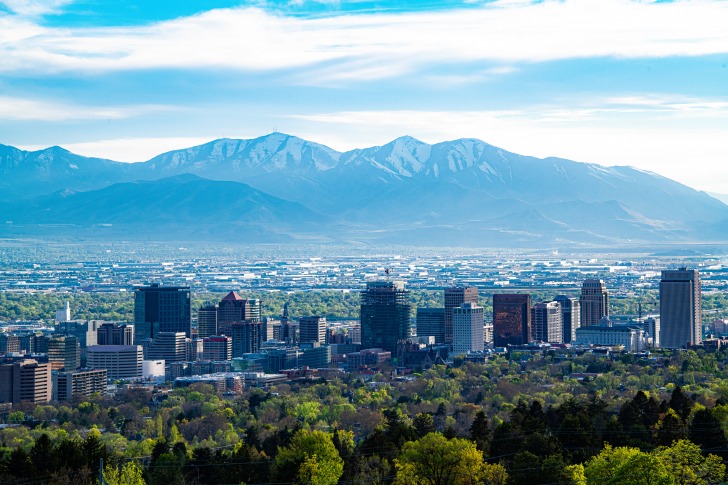
Contents
Pros of Living in Salt Lake City, UT
1. Healthy Economy and Job Market
Despite the challenges businesses have faced over the last few years, Salt Lake City’s economy and job market are booming.
In fact, the capital city recently landed the #2 spot on WalletHub’s Best Cities for Jobs list.
Salt Lake City’s current unemployment rate is 2.4%, well below the 3.7% national average.
The city’s diverse and strong labor force has attracted major employers like eBay, Delta Air Lines, and Goldman Sachs.
While the capital city is in the midst of a tech boom, job seekers aren’t limited to tech jobs.
There are employment opportunities spanning every industry including tourism, hospitality, and higher education.
2. Weather
While Salt Lake is known for its cold winters, the city delivers favorable conditions year-round.
With an average of 222 sunny days annually, Salt Lake City has more sunshine than many regions of the U.S.
If you decide to relocate, be sure to keep SPF with you at all times to protect you from high-altitude sun exposure.
To give you an idea of what the weather’s like year-round, let’s look at some numbers:
- With an average high of 91 degrees, July is the warmest month in Salt Lake City
- Temperatures drop below freezing in the winter, with an average temperature of 23.3
- Spring brings snowfall until April, with temperatures ranging between 60 degrees and the mid-30s
- Fall’s temperatures bring lows in the 40s, with highs in the low 70s
- The average annual snowfall is 53.6, nearly double the U.S. average of 27.8
- The city averages 19.5 inches of rain annually
Because Salt Lake is in a valley, wildfires, and flooding pose the greatest risks.
Fortunately, the city’s safe from earthquakes and tornadoes.
If you relocate to the area, Be Ready Utah is a great resource for emergency preparedness.
3. An Outdoor Lover’s Playground
If you enjoy outdoor activities, Utah has some of the most beautiful landscapes in the country.
The Wasatch Mountains provide the city’s backdrop and ample outdoor sports opportunities.
Skiing and snowboarding enthusiasts claim this region has the “Greatest Snow on Earth.”
The Wasatch Mountains are just a small portion of what Utah has to offer.
It’s also home to “The Mighty 5” which includes Zion National Park, Arches National Park, Bryce Canyon National Park, Capitol Reef National Park, and Canyonlands National Park.
Just hours from Salt Lake City, these parks are where you’ll enjoy fishing, hiking, climbing, horseback riding, etc.
4. Diverse and Inclusive Culture
While Utah’s known for its strong religious presence, its culture is diverse and inclusive.
Salt Lake City’s residents are friendly and accepting of everyone.
It ranks as the second-friendliest city in the U.S. for the LGBTQIA+ community.
It’s worth noting that residents are notoriously giving.
They donate money, as well as their time, to help their fellow man.
5. Music and Cultural Events
Salt Lake City is the state’s cultural hub.
From outdoor concerts to the Sundance Film Festival, the city hosts a variety of cultural events throughout the year.
These events are an opportunity to enjoy some fresh air and connect with others in the community.
6. Education
If you’re relocating with a family, you can rest assured your children will receive a quality education.
Salt Lakes schools are nationally recognized, and its districts consistently receive high marks.
Salt Lake’s educational offerings don’t stop there.
It’s home to some of the nation’s top higher-learning institutions, including Salt Lake Community College, Brigham Young University, and the University of Utah.
7. Access to Public Transportation
Because Salt Lake International Airport is a major hub, the city’s spent a great deal of money improving its infrastructure and public transportation system.
Commuters have multiple public transportation options, including a light-rail system, commuter train, and city bus system.
Salt Lake City also has bike lanes throughout the city, as well as a bike-sharing program.
The city’s public transit system is both eco and user-friendly.
8. Young Demographic
The Salt Lake community isn’t just educated; they’re also young.
Young students heading off to college are drawn to all that the state has to offer.
After graduation, many of them remain in the city to pursue career and entrepreneurial opportunities.
This has been a major contributor to Salt Lake’s economic growth.
Cons of Living in Salt Lake City, UT
1. Crime Rate
Crime is the biggest challenge Salt Lake City faces today.
Its crime rate is 730 violent crimes per 100,000 people.
This is 200% higher than the national crime rate average of 383 per 100,000 inhabitants.
This is slightly higher than Las Vegas and 200 less than Los Angeles.
Law enforcement continues to work to reduce the city’s crime rate.
Residents and tourists should not walk alone at night and avoid dark, empty places.
2. Housing Prices
Over the last decade, an increasing number of people have relocated to Salt Lake City.
This influx of people has caused a dramatic increase in home values.
While this is great news for current homebuyers, it presents a challenge for those moving to the area.
Salt Lake City’s current median home value is $460,000.
3. Traffic
Despite the city’s efforts to improve its infrastructure, congestion can get worse during certain parts of the day.
Locals say rush hour traffic patterns are predictable, however, which makes it easier for planning ahead.
Salt Lake’s traffic congestion is due to the rise in new residents and a higher number of tourists.
The average commute time is 19.4 minutes, however, which is 7 minutes faster than the national average.
4. Snow
If you aren’t a fan of snow and all that it brings, you probably want to reconsider relocating to Salt Lake City.
While the weather is a huge draw, the city gets an average of 54 inches annually.
The snow does offer some positives.
It transforms the landscape into a winter wonderland, perfect for winter sports enthusiasts.
We would be remiss if we didn’t mention the strange weather event known as winter inversion.
This event occurs when layers of warm air trap colder air underneath it.
A thick fog forms because of this, which can trap pollution and make breathing difficult.
5. Cost of Living
At 118.9, the cost of living in Salt Lake City is one of the highest in the nation.
With average housing prices around $460,000, less than 50% of the city’s residents own their homes.
Don’t let these numbers discourage you.
The median household income is $60,676, which is higher than the national average.
Rent is also very affordable in this region.
6. Air Quality
If you think the crisp mountain air automatically equates to good air quality, you haven’t been to Salt Lake City.
The city’s air quality problem continues to rise as more and more people relocate to the area.
The city’s air pollution isn’t just from all the people and their vehicles.
Unfortunately, the smoke from California’s wildfires makes its way to Salt Lake.
The air is thick with smoke at certain times of the year.
7. A Confusing Street Naming System
One of the biggest challenges transplants face is Salt Lake City’s unique street naming system.
Or rather, a numbering system.
Stemming from its Mormon roots, the city’s streets are numbered, rather than named.
Temple Square is the central point, with numbers going up the further you get away from the square.
8. Taxes
While the low corporate tax rates have enticed big companies to build their headquarters here, personal income taxes are a different matter.
In addition to your federal taxes, you’ll also pay a flat state income tax rate of 4.85%.
This is one of the highest rates in the country.
You’re also subject to a sales tax on most purchases.
The average combined state and local sales tax rate is 7.19%.
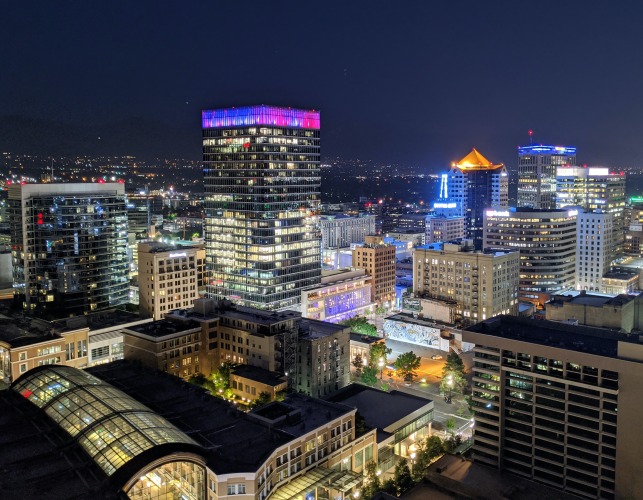
Pros and Cons of Living in Salt Lake City, UT – Summary Table
| Pros of Living in Salt Lake City, UT | Cons of Living in Salt Lake City, UT |
|---|---|
| 1. Healthy Economy and Job Market | 1. Crime Rate |
| 2. Weather | 2. Housing Prices |
| 3. An Outdoor Lover’s Playground | 3. Traffic |
| 4. Diverse and Inclusive Culture | 4. Snow |
| 5. Music and Cultural Events | 5. Cost of Living |
| 6. Education | 6. Air Quality |
| 7. Access to Public Transportation | 7. A Confusing Street Naming System |
| 8. Young Demographic | 8. Taxes |
Salt Lake City Safety Overview
READ THE FULL REPORT: Salt Lake City Safety Review
Safety Index: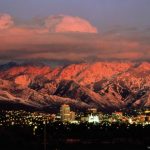
- OVERALL RISK: MEDIUM
- TRANSPORT & TAXIS RISK: LOW
- PICKPOCKETS RISK: LOW
- NATURAL DISASTERS RISK: MEDIUM
- MUGGING RISK: MEDIUM
- TERRORISM RISK: MEDIUM
- SCAMS RISK: LOW
- WOMEN TRAVELERS RISK: LOW
Frequently Asked Questions
What Are the Safest Neighborhoods in Salt Lake City?
The neighborhoods of Central City, Greater Avenues, Yalecrest, Wasatch Hollow, and East Bench are family-friendly and have low crime rates.
Is Salt Lake City Liberal or Conservative?
Despite Utah’s conservative leanings, Salt Lake City is known for its politically liberal leanings.
Are There Homeless in Salt Lake City?
The city has seen an increase in homelessness in recent years.
There are currently between 1,000 and 3,000 homeless people in Salt Lake.
What Percentage of Salt Lake City Is Mormon?
Of the 1.1 million Salt Lake City residents, 49% are active or nonactive members of the Mormon church.
Where Should I Not Live in Salt Lake City?
The neighborhoods of Glendale, Poplar Grove, People’s Freeway, and Westpointe have the highest crime rates and should be avoided.
Locals also advise against living downtown.
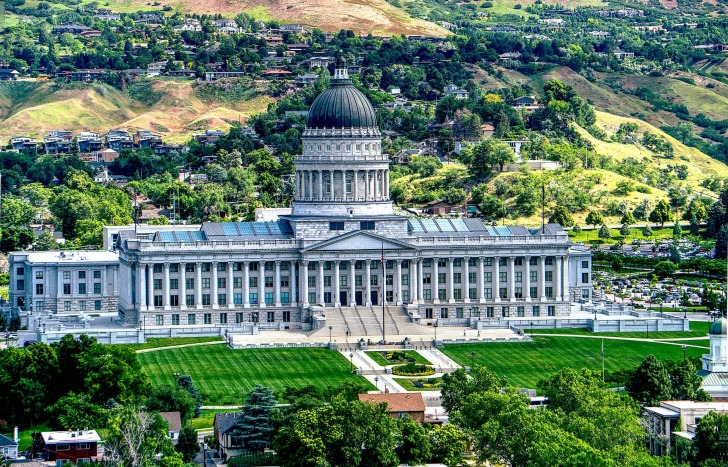
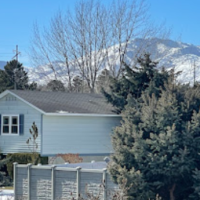

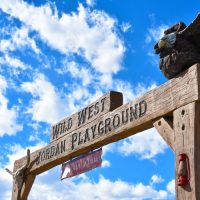
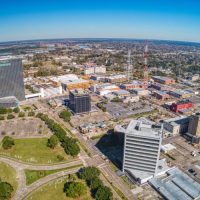







Salt Lake City’s strong sense of community and friendly residents make it a welcoming place for families and individuals alike.
The place offers a strong job market, especially in the tech and healthcare sectors, providing career opportunities and economic stability for residents.